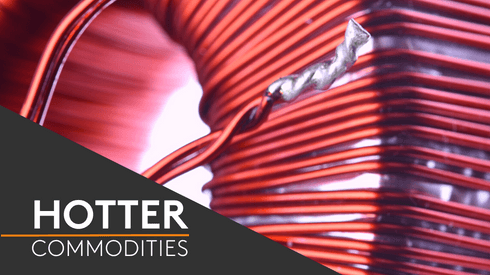Aluminium: Upside breakout last week
The price of aluminium on the London Metal Exchange surprised us with a break to the upside in the week ended July 10, when prices on the Shanghai Futures Exchange raced to three-and-a-half-year highs. While we think there is more short-term upside potential if technical and liquidity factors maintain the momentum, we remain mindful that structural and fundamental issues are far less supportive here than in most of the other base-metals markets. Participants may favor ‘buying the dips’ rather than chasing prices higher.
Copper: More upside for prices in Q3
Copper has been the best performer in the year to date, up by around 6% on the LME. Yet, the global refined copper market is likely to show a significant surplus this year, with the demand destruction in the first half of the year unlikely to be offset by supply disruptions. While this may sound confusing, our analysis suggests that, in the present trading circumstances, the main driver of copper prices is the macro environment, not the supply-demand fundamentals. In this context, we see more upside for copper prices in the July-September quarter and have raised our price forecasts accordingly.
Lead: Price gains extended on robust fundamental grounds
Supply disruptions – and the potential for more in the coming weeks and months while the Covid-19 pandemic spreads across mining regions – have raised lead prices. They have now reached $1,882 per tonne, within $156 per tonne of the high seen in January 2020. And a rebound in vehicle sales, plus increased demand for replacement batteries, should boost lead usage too, adding further fundamental support to the price recovery.
Nickel: Staying cautiously bullish
A cautiously bullish approach to our nickel price forecasts has seen us feature on Fastmarkets’ Apex leader board of most-accurate nickel price forecasters for at least four of the past five quarters. We remain cautiously bullish on nickel for the third quarter of 2020, based on the balance of a number of macro, fundamental and technical factors. We have raised our price forecasts modestly as a result.
Tin: Price dips should be bought
Tin’s fundamentals are likely to weaken somewhat in the summer months due to traditionally softer demand conditions, which are already being seen by physical market participants. This, in addition to the closed SHFE-LME arb window, could trigger some bouts of profit-taking in the LME tin market. But we believe that the market will remain in a ‘buy-on-the-dips’ mode, thanks to a supportive macro backdrop.
Zinc: Price forecast upgraded
We have trimmed slightly our outlook for refined zinc production in the second half of 2020, to account for delayed concentrate shipments from Teck’s Red Dog mine following a disruption there. While this has narrowed the second-half 2020 surplus, we believe this supply will show up in the first half of next year, and we are projecting a slightly larger surplus for 2021 as a result. For prices, we have raised our third-quarter average base-case forecast to $2,200 per tonne to better account for the current upside breakout, rising supply disruption threats, ample liquidity and broad risk-on sentiment.
Click here to view the Base Metals Market Tracker in full.





